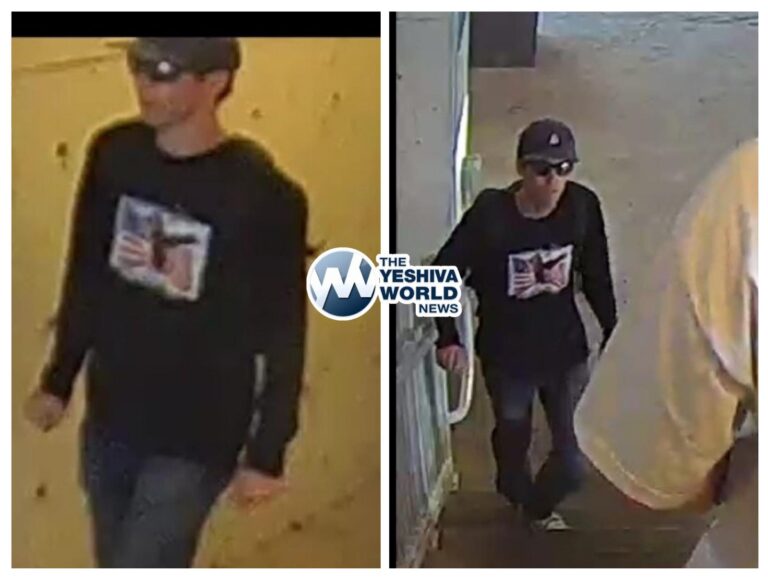 [By Rabbi Yair Hoffman]
[By Rabbi Yair Hoffman]
One should look at Yom Kippur as an opportunity to become ever closer to HaKadosh Baruch Hu. The fact that we do not wear shoes and do not eat makes us similar to malachim. We must take advantage of this similarity and emulate malachim —entities that are entirely spiritual—during this day, in order to further our bond to Hashem and to develop our dveikus to Him.
It is important, as mentioned elsewhere, to perform our teshuvah out of an intense love of Hashem. Doing so allows our aveiros to turn into zechuyos (meritorious actions).
It is a Torah mitzvah to add on to the day of Yom Kippur, both before it and after it. Women are also obligated in this mitzvah.
During the Minchah Shemoneh Esreh of Erev Yom Kippur there is a mitzvah of Vidui — confessing one’s sins. The custom is to daven Minchah prior to the eating of the Seudah HaMafsekes, the final seudah before Yom Kippur begins. Women should also daven Minchah before this meal and should recite the Vidui at Minchah.
The opinion of the Ramban is that another Vidui should be recited after the meal as well and before Yom Kippur. The Mishnah Berurah advises that we be stringent and follow this view. Men say the Tefillah Zakah, while women could recite Ashamnu before Yom Kippur.
The table should be covered with a tablecloth, as on Shabbos and on Yom Tov.
Yom Tov candles are lit for Yom Kippur just as for other Yamim Tovim. In addition to this, every family should light a candle called the “Ner HaBari.” This candle should be long enough to last the entire Yom Kippur. It will be used for Havdalah on Motzaei Yom Kippur, because a ner she’shavas is required — a flame that lasted over Yom Kippur.
In addition, yahrtzeit candles are lit for family members who have passed on.
It is a minhag in Klal Yisrael for parents to bless their children, old and young, before leaving for shul on Erev Yom Kippur. This minhag dates back to the times of the Avos.
Yom Kippur, in regard to all melachah, is like Shabbos and not like Yom Tov. Aside from this, however, there are five inuyim (hardships) that we also undergo on Yom Kippur. We do not eat or drink. This hardship is not only Biblically forbidden, but if one violates it, one incurs a chiyuv kareis (being cut off from the nation). There are four other inuyim that (according to most poskim) are also d’Oraisa. These are prohibitions against bathing, anointing with oil, wearing shoes, and marital relations. Carrying is also forbidden on Yom Kippur, just as on Shabbos.
What quantity of food does the Torah forbid to be eaten on Yom Kippur? There is a principle in Halachah called “Chatzi shiur assur min HaTorah – even a minimal amount is forbidden from the Torah. Even though in order to be chayav kareis one must eat the amount of a large date (which is slightly smaller than an egg), this principle tells us that it is forbidden to eat or drink any amount. One may swallow one’s saliva, according to the Mishnah Berurah, although there were some opinions that suggested not doing so.
KOL NIDREI
Prior to the recitation of Kol Nidrei, the sifrei Torah are taken out of the aron kodesh and taken around the shul. People hug and kiss the Torah then. The Mateh Ephraim explains that people ask forgiveness from the Torah for impinging on its honor in some manner or form throughout the year.
The services for Yom Kippur continue with the recitation of Kol Nidrei. The reason for it is because when we stand before Hashem we wish to be free of any stain in order to fulfill the verse in Vayikra (16:30) that discusses Yom Kippur: “Lifnei Hashem tit’haru — before Hashem you shall be pure.” Three people stand before the teivah during this time. The Levush explains that when Klal Yisrael fought Amalek, both Aharon and Chur stood next to Moshe Rabbeinu because it was a fast. Another reason is because Hataras Nedarim requires three people.
WHAT IS A NEDER
Nedarim can be divided into two categories: nidrei issur and nidrei mitzvah. The first category involves the Torah notion that a human being can create a prohibition upon himself when one verbalizes with the language of neder or vow that he will not do ____ or eat____. If it was done without the use of the term then there is no neder whatsoever. It must also be verbalized – if it is just thought or even if it is written, it does not count as a neder.
The second category is when verbalizes an intention to perform a Mitzvah or otherwise good deed, such as a chessed. With nidrei mitzvah even if one does not use the terminology of neder or vow it is still effective. By Rabbinic law, however, even doing a Mitzvah or good deed three times is considered a neder – even if one did not say anything. Indeed, even doing something once with the intention of continuing to do it constitutes a neder by Rabbinic law. Since both of these are rather common, we see why it is so necessary to recite the Kol Nidrei.
After the Kol Nidrei, the chazzan recites the blessing of Shehecheyanu. The members of the congregation recite it along with him silently. They finish before the chazzan so that they may answer Amen to his blessing. Every Yom Tov requires a Shehecheyanu. Women who lit the candles for Yom Kippur should make sure that they do not recite the Shehecheyanu again.
Between Kol Nidrei and Maariv, the Rabbi often speaks words of mussar.
The custom is to stand up straight during the Selichos and tefillos of Yom Kippur whenever it is indicated in the machzor. In explanation for this, the Raavya cites the Pirkei Rabbi Eliezer, chapter 46, which says that the Satan says before Hashem, “On this day Klal Yisrael are like angels, standing tall and straight, without food or water, and without shoes.”
When the Shema is recited, the words “Baruch Shem Kevod Malchuso l’olam va’ed” are recited out loud. The Tur explains that Moshe Rabbeinu saw the angels praise Hashem with this expression when he arose to Shamayim to receive the Torah. Since we are like angels on Yom Kippur, we, too, recite it aloud.
We daven Shacharis and lein from the Torah. The Torah reading is from Vayikra, Chapter 16:1–34, where the instructions are given to Moshe and Aharon concerning the exact procedure for the Kohanim’s service on Yom Kippur, which would enable them to achieve atonement for Bnei Yisrael. The portion then details the laws of Yom Kippur. Six people are called to the Torah on Yom Kippur, and a maftir. Generally a Yom Tov has five aliyos, while Rosh Chodesh has four. During the week there are three people called to the Torah, and on Shabbos there are seven.
For the Mussaf Shemoneh Esreh we go through the Avodah of Yom Kippur in the Beis HaMikdash. There are parts in the Mussaf Shemoneh Esreh where it is the custom to bow or prostrate oneself completely on the floor. However, it is forbidden for Jews to bow on the floor of a building unless it is in the Beis HaMikdash itself. Therefore, the custom is to have a towel or paper towel upon which to rest one’s knees.
During Minchah, we read the parashah of the arayos (Vayikra 18:1-30)and we read Maftir Yonah for the haftarah. We read the section of the arayos whenever there is separation from arayos, there is holiness. We read from Yonah because of the very powerful lesson of Teshuvah in that Sefer.
Ne’ilah is a special prayer that we add on Yom Kippur as the gates of Heaven are being locked. At the end of Ne’ilah the chazzan says the passuk of Shema Yisrael once. Baruch Sheim Kvod Malchuso l’olam va’ed is recited three times, and Hashem Hu HaElokim is recited seven times. We blast the shofar with a Tekiah Gedolah — even if it is still bein ha’shemashos, and we do so on Shabbos (Saturday near evening) as well. The shofar blast indicates that the period of judgment has ended and that the Shechinah has arisen upward. Then we recite “L’shanah habaah b’Yerushalayim.”
For Havdalah we recite the berachah Borei Me’orei HaAish — something we do not do for other Yamim Tovim unless they fall on Motzaei Shabbos. This is because fire was created on Motzaei Shabbos. Why, then, do we recite the blessing on Yom Kippur? We do so because it was forbidden to use fire all of Yom Kippur, unlike Yom Tov when we are able to cook. This is why we need to use a ner she’shavas (a flame that was burning all day). Most authorities hold tha when Yom Kippur falls during the week a blessing is not recited on the fire if the flame it was received from was not burning all day. If Yom Kippur falls on Motzaei Shabbos, however, if such a flame is not available, a blessing is still recited.
MOTZAEI YOM KIPPUR
On Motzaei Yom Kippur we should be joyous and feel confident and assured that our tefillos were answered positively. The Midrash tells us that a bas kol, a Heavenly voice, emanates on Yom Kippur and says the passuk in Koheles (9:7): “Go out and eat your bread in joy, as Hashem has found your deeds to be favorable.” It is the custom to immediately jump into more mitzvos. We begin constructing the sukkah on that night.
One should arise early to do one’s avodas Hashem on the day after Yom Kippur. The first Beis HaMikdash was dedicated in the days between Yom Kippur and Sukkos.
The author can be reached at [email protected]










